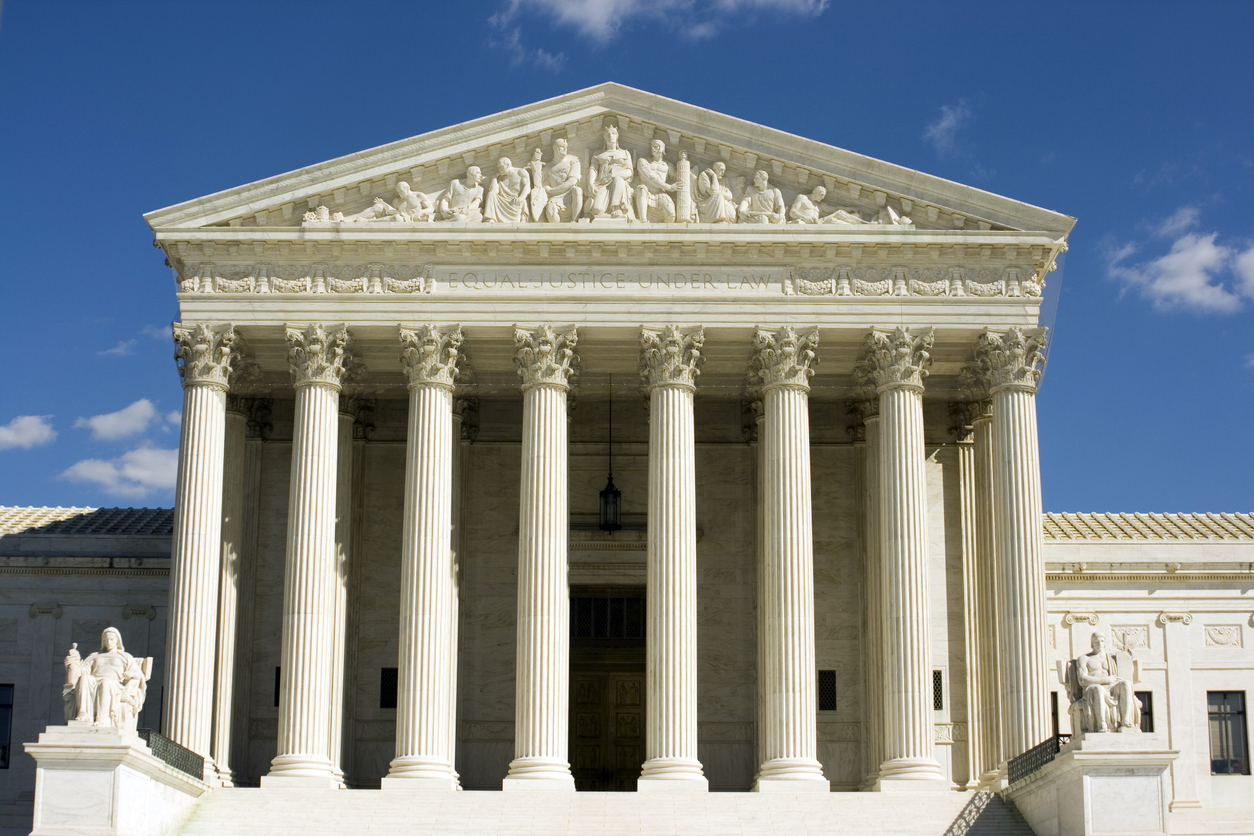
The November 2023 publication of updated guidance by the International Bar Association on the role of lawyers in promoting businesses’ respect for human rights provides an opportunity to revisit the many ways that business lawyers can and should advise their clients regarding potential adverse human rights impacts of their operations and business relationships.
Lawyers and their law firms are engaged in a wide range of business activities on a day-to-day basis as they provide services and advice to their clients, employ personnel to assist them in their assignments, and purchase goods and services from a variety of vendors. It has always been clear that lawyers are expected to conduct themselves in a manner that aligns with applicable professional codes of conduct and ethics, including obligations to promote justice and prevent injustice. However, law firms, like all other businesses, must also accept and meet responsibilities to respect human rights as provided in the United Nations (“UN”) Guiding Principles on Business and Human Rights (the “Guiding Principles”).[1] The American Bar Association has acknowledged that the Guiding Principles apply to the professional responsibility of lawyers,[2] and other national and local bar associations have publicly endorsed the Guiding Principles and issued guidance to their members on assisting their clients.
In November 2023, the International Bar Association (“IBA”), which previously adopted guidelines on business and human rights for lawyers and law firms based on the Guiding Principles,[3] published an updated guidance note on business and human rights discussing the role of lawyers in the changing environment.[4]
The IBA noted that clients that seek legal advice solely for technical compliance with laws and regulations, without regard to the potential adverse human rights impacts of their proposed actions, fail to see “the larger picture of business risks of involvement in human rights abuse . . . [including] . . . reputational harm; lost opportunities; reduced access to capital markets; delay costs; high interest or more expensive debt; top management distraction; and reduced ability to hire and retain talent.”[5] The UN Working Group on Business and Human Rights has identified several challenges that business lawyers often must overcome in providing effective counseling to their clients regarding human rights due diligence:[6]
- Lack of understanding of human rights law in general and what is meant by “human rights risks” in particular—business lawyers sometimes do not understand that human rights include what are otherwise familiar topics such as environmental and labor rights and standards.
- Failure to appreciate that human rights impacts are legal issues for all companies, not just private security companies and weapons manufacturers.
- Lack of understanding of the links between human rights and legal, commercial, and reputational risks, and failure to realize that even where no material legal risks can be identified, there may still be commercial and reputational consequences from the company’s behavior.
- Failure of lawyers to get involved in addressing actual or potential human rights risks at an early stage before the participants have become embroiled in litigation or another adversarial dispute resolution process.
A growing number of law firms, typically international firms with offices throughout the world, are launching formal practice areas covering business and human rights and corporate social responsibility. Such firms are offering services related to human rights reporting, implementation, and interpretation of the Guiding Principles and other “soft law” standards; human rights policies; managing supply chain risks; human rights due diligence and impact assessments; compliance systems and risk management; human rights and major projects (e.g., finance, mergers and acquisitions, and new facilities in communities where indigenous peoples’ rights may be impacted); and human rights as a defense tool. Lawyers working inside companies are leading new cross-functional working groups to oversee human rights due diligence and integrate appropriate due diligence processes into common business transactions (e.g., mergers and acquisitions), as well as expanding their existing compliance initiatives in related areas such as anti-bribery, data privacy, ethics, and business integrity.
In its recently issued guidance update, the IBA noted the following situations in which those lawyers are and should be integrating counseling on business and human rights:[7]
- Mandatory Human Rights Due Diligence. Laws and regulations mandating human rights due diligence are increasing, which will require lawyers to work with their clients “to establish and implement appropriate policies, processes and procedures to ensure compliance.”
- Environmental Law. Due diligence relating to environmental matters is expanding to include identification and remediation of potentially severe human rights impacts of environmental harm, climate change, pollution, and loss of diversity, particularly adverse impacts on vulnerable people and communities.
- Corporate Governance. Directors and members of a company’s senior management team must be provided with guidance on how to integrate and embed human rights due diligence into internal governance structure and enterprise risk management, policies, processes, and procedures.[8]
- Mergers and Acquisitions. Since the UN Guiding Principles require that companies conduct human rights due diligence with respect to the activities of parties with which they intend to form a business relationship, lawyers advising companies on mergers and acquisitions will need expand their traditional due diligence work to include human rights and environmental risks of the operations of the other party to the transaction.
- Finance. Since the UN Guiding Principles hold financial institutions and investment companies accountable for adverse human rights impacts that they cause or contribute to, their attorneys need to advise them about the potential human rights impacts of their investment activities (e.g., use of loans by borrowers to engage in activities that have an adverse impact on the human rights of groups in the communities in which they are operating). Attorneys for such entities also need to assist them in including representations and covenants in transactional documents relating to human rights issues (e.g., covenants from companies receiving investment about diversity and inclusion in their workforces).
- Contracts. The IBA noted that “[l]awyers play a central role in the formation, drafting and enforcement of contracts . . . [which are] . . . a key source of leverage through which a company can incentivize both buyers and suppliers to improve their human rights performance.” Lawyers should be mindful of, and participate in, the various responsible contracting initiatives that have emerged to develop standards for inclusion of human rights due diligence and dispute resolution mechanisms into contracts, particularly contracts with parties in the supply chain.[9]
- Dispute Resolution. Lawyers will be asked to bring their skills and experience in helping companies manage and resolve disputes that emerge from the growing use and acceptance of human rights due diligence standards. In addition to support in traditional forums such as courts, administrative agencies, and arbitration panels, lawyers will be involved in the development and implementation of the operational-level grievance mechanisms contemplated under the Guiding Principles.
- Reporting and Disclosure. Companies have long relied on lawyers for assistance in fulfilling their reporting and disclosure obligations to regulators. Those skills will be useful in complying with emerging regulations and voluntary standards that impose new expectations on companies to communicate with regulators and stakeholders regarding the actual or potential adverse human rights impacts of their operations and business relationships, as well as steps they are taking to promote human rights. (For example, California is requiring venture capital firms to report on diversity among the leadership teams of their portfolio companies.)
The IBA noted that a law firm’s ability to influence clients to avoid or mitigate the adverse human rights impacts of their operations, transactions, and business relationships turns on whether the firm can credibly demonstrate its competence and experience as a counselor on business and human rights issues. The IBA listed several steps that law firms can take, including developing internal firm capacity on business and human rights; identifying problems that other companies have faced when they ignored human rights issues in similar situations; offering to provide human rights capacity building to clients; providing advice on business and human rights to clients on a pro bono basis; issuing client briefings and alerts; participating in multi-stakeholder dialogues or forums to discuss emerging issues and develop standards for specific issues or industry contexts; and supporting the efforts of bar associations to provide training and guidance.[10]
Law firms can also establish credibility in the business and human rights arena by taking actions that proactively promote the human rights of various internal and external stakeholders. For example, law firms can take steps to combat discrimination and harassment in their workforce and expand opportunities for historically disadvantaged groups through their recruitment, hiring, training, promotion, and leadership development strategies. Law firms can support the physical and mental health of members of their workforce by expanding caregiving assistance and the availability of paid leave to take care of children and other family members. In addition, law firms can support and promote realization of basic human rights by members of the communities in which they operate through investments in initiatives such as community development, education, and improvement of access to food and healthcare, and through providing employees with opportunities to volunteer with community groups while being paid by the firm. Of course, law firms have long contributed to human rights through pro bono programs that allow people and groups to contest their claims and grievances in the legal system, and in recent years, pro bono work has expanded to assist entrepreneurs from historically underrepresented groups (particularly women and racial and ethnic minorities) in starting their own businesses. Finally, more law firms have introduced sustainability into their day-to-day operational practices, and some firms have sought and achieved “certified B corporation” status to demonstrate adherence to stringent standards of performance and accountability with respect to their sustainable business practices.
The legal profession is much maligned in the business community and in society in general, and many lawyers complain of deep dissatisfaction with their choice of career and the day-to-day tasks associated with their roles in the legal system. Proactively participating in environmental and social responsibility initiatives, either as individual lawyers, as law firm team members, or by assisting clients, is a real opportunity for lawyers to change their lives and the communities in which they practice in a positive manner. Many lawyers entered law school with the goal of acquiring the tools necessary to help those who needed support from others and, in some small way, to “change the world.” For those who may have lost their way, for whatever reason, or are looking for ways to do more, embracing counseling of businesses on their duties to respect human rights is a welcome and promising platform.
***
For further discussion of the role of lawyers and the legal profession in business and human rights, see the author’s chapter on the subject, which is an updated version of work that originally appeared in the author’s book Business and Human Rights: Advising Clients on Respecting and Fulfilling Human Rights (ABA Publishing). The chapter includes practical guidance for lawyers and law firms on business and human rights, a comprehensive list of resources that they can consult, and detailed discussions on law firm human rights policies and statements, client intake procedures, human rights risk management plans, withdrawing from engagements due to concerns about adverse human rights impacts of client activities, evaluation and reporting, governance and management of responsible business activities, building internal capacity and credibility on business and human rights, and the roles of in-house lawyers and the general counsel.
See the Guiding Principles, which are sometimes called the “Ruggie Principles” in reference to John Ruggie, the UN Special Representative for Business and Human Rights who first introduced the principles in 2007 and led the efforts that eventually led to the endorsement of the Guiding Principles. ↑
John F. Sherman III has pointed out that the ABA’s Human Rights Committee has noted the Guiding Principles “pour content into the independent and candid advice that lawyers must provide to corporate clients under ABA Model Rule 2.1” and that the acknowledgement in the Commentary to Model Rule 2.1 that “moral and ethical factors impinge on most legal questions” is consistent with professional codes of responsibility in other countries that acknowledge that lawyers “must balance their dual roles as guardians and advocates for the interests of their clients, and as gatekeepers for the interests of courts and society.” John F. Sherman III, “Professional Responsibility of Lawyers under the Guiding Principles,” Shift, April 2012. See also John F. Sherman III, “The UN Guiding Principles: Practical Implications for Business Lawyers,” In-House Defense Quarterly (Winter 2013), 50. ↑
IBA Practical Guide on Business and Human Rights for Business Lawyers (London: International Bar Association, 2016). See also Reference Annex to the IBA Practical Guide on Business and Human Rights for Business Lawyers (London: International Bar Association, 2016). ↑
Updated IBA Guidance Note on Business and Human Rights: The role of lawyers in the changing landscape (London: International Bar Association, 2023), 4. ↑
Companion Note II to the Working Group’s 2018 Report to the General Assembly: “Corporate human rights due diligence—Getting started, emerging practices, tools and resources” (UN Working Group on Business and Human Rights, October 2018), 19. ↑
Business lawyers are also working with clients to form, organize, and operate enterprises based on new corporate governance frameworks created specifically to integrate the responsibilities of businesses for their environmental and social impacts (e.g., benefit corporations). ↑
For more resources regarding responsible contracting, see, e.g., Susan A. Maslow and David V. Snyder, eds., Contracts for Responsible and Sustainable Supply Chains: Model Contract Clauses, Legal Analysis, and Practical Perspectives (Chicago: ABA Publishing, 2023); The Working Group to Draft Human Rights Protections in International Supply Contracts (ABA Business Law Section), David V. Snyder, Susan A. Maslow, and Sarah Dadush, “Model Contract Clauses to Protect Workers in International Supply Chains, Version 2.0,” Business Law Today, September 26, 2022. ↑
IBA Practical Guide, 36. ↑









 New Representations and Warranties Insurance (RWI) correlations. We’ve taken a large number of existing data points throughout the study and correlated those points by deals that reference use of reps and warranties insurance, so you can see how that changes things.
New Representations and Warranties Insurance (RWI) correlations. We’ve taken a large number of existing data points throughout the study and correlated those points by deals that reference use of reps and warranties insurance, so you can see how that changes things. #MeToo nuances. Based on input from Ally Coll of
#MeToo nuances. Based on input from Ally Coll of  Closer looks at fraud carve-outs. We wanted to see how often a deal that had an express fraud carve-out to the non-reliance provision also had such a carve-out to the exclusive remedy provision, so we added a new slide exploring just that. Likewise we added a new data point for how often the fraud carve-out to the exclusive remedy provision is limited to fraud as to the reps/transaction documents.
Closer looks at fraud carve-outs. We wanted to see how often a deal that had an express fraud carve-out to the non-reliance provision also had such a carve-out to the exclusive remedy provision, so we added a new slide exploring just that. Likewise we added a new data point for how often the fraud carve-out to the exclusive remedy provision is limited to fraud as to the reps/transaction documents. Breach of covenants as stand-alone indemnity. We have added to this year’s Study a data point on how often breach of covenants appears as a stand-alone basis for indemnification. Interestingly, not all deals included breach of covenants as a stand-alone indemnity—only 94% had this formulation.
Breach of covenants as stand-alone indemnity. We have added to this year’s Study a data point on how often breach of covenants appears as a stand-alone basis for indemnification. Interestingly, not all deals included breach of covenants as a stand-alone indemnity—only 94% had this formulation.

